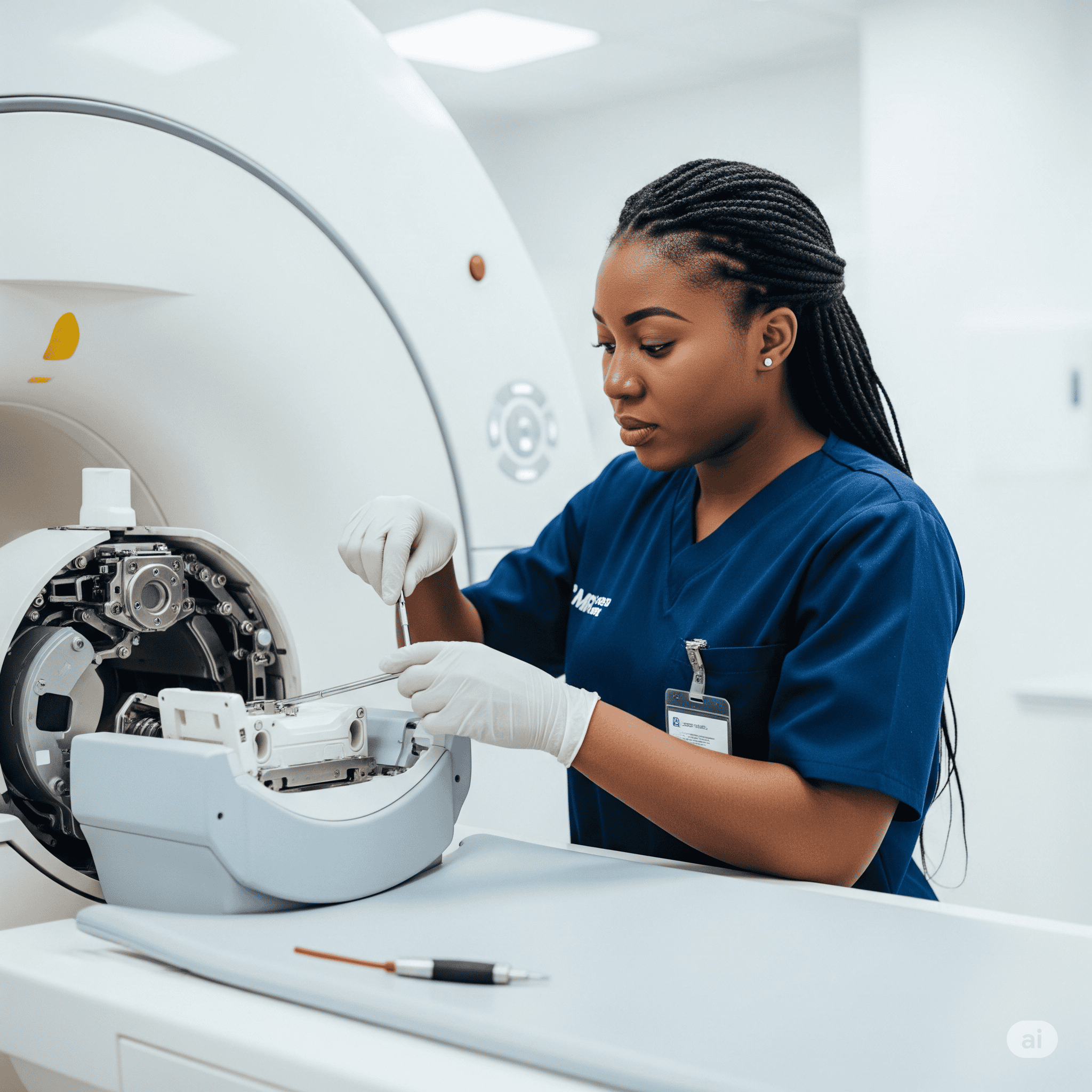You’re exploring Biomedical Equipment Technology at Cincinnati State — and that’s a smart move. It’s a hands-on degree that teaches you how to work with the medical equipment used every day in hospitals, like ventilators, imaging machines, and monitors. If you’re someone who likes fixing things, solving problems, and supporting healthcare in a technical role, BMT could be a great fit.
But Cincinnati State offers a few other similar majors within the Electrical Engineering Technology Program, and it can be hard to know which one truly fits your goals. That’s why this page exists: to help you compare the options so you can feel more confident that Biomedical Equipment Technology is the right path for you.

How Most Students Decide
All three programs can be completed in two years, include a paid co-op, and lead to strong job prospects. To decide which path is right for you, most students boil it down to a few simple questions…
What Type of Equipment Do You Want to Work On?
If you want to work on life-saving medical devices like CT scanners and ventilators, Biomedical Equipment Technology (BMT) is the right choice. For hands-on experience with electronics and networking gear, Electronics Systems (ESET) is your path. If you’re interested in power grids and smart energy systems, Power Systems (PSET) is the best fit.
What Kind of Work Setting Do You Want?
If you want to be in hospitals and medical facilities, BMT puts you right in the action. If you like a mix of office settings and fieldwork, ESET is your go-to. If you’re ready for industrial plants and outdoor sites, PSET gets you there.
A Side by Side Comparison
| Biomedical Equipment (BMT) | Electronics Systems (ESET) | Power Systems (PSET) | |
| Program Length | 6 Semesters / 2 Years | 6 Semesters / 2 Years | 6 Semesters / 2 Years |
| Focus | Manage and maintain medical equipment in healthcare settings | Broad range of electronic applications, including computer design, digital systems, microelectronics, and telecommunications | Electrical power systems generation, distribution, and maintenance, including modern smart grid technologies |
| Career Fields | CAT scanners Ultrasound equipment Life support systems (e.g., ventilators, anesthesia machines) Surgical lights Hospital beds Electric wheelchairs | Electronic systems Microprocessors Networking equipment | Power systems Transmission lines |
| Key Skills | Setup, calibration, troubleshooting, and repair of devices | Designing, repairing, and troubleshooting | Monitoring and ensuring the quality, reliability, and safety |
| Work Settings | Hospitals, medical, and medical device manufacturers | Tech companies and telecommunications | Utility companies and industrial settings |
| Career Roles | Biomedical technician Biomedical information systems technician | Electronics technician Computer systems technician Field service technician | Power systems technician Power instrumentation technician |
| Co-op Experience | Required | Required | Required |
| Starting Salary | $55,000+ | $65-82,000+ | $40-60,000+ |
Biomedical Equipment Technology (BMT)
Work with life-saving medical technology in hospitals and clinics.
A hands-on program focused on installing, maintaining, and repairing equipment like ventilators, imaging machines, and monitors. Includes a required co-op — ideal for students who want a technical role in healthcare.
Electronics Systems (ESET)
Build and troubleshoot the tech behind everything from phones to microchips.
Covers a wide range of electronics used in industries like telecommunications, networking, and digital systems. Includes a required co-op — great for tech-savvy students who want options across industries.
Power Systems (PSET)
Keep power flowing in cities, factories, and smart grid systems.
Focuses on power generation and distribution, including high-voltage systems and industrial electrical work. Includes a required co-op — best for students comfortable with active, outdoor, or industrial job settings.
Your path at Cincinnati State starts when you apply, but if you’re not quite ready, you can reach out with any and all questions or explore college and program details like key dates, courses, costs, and financial aid options via the links below, or by requesting your starter kit.
Mon – Fri 8 A.M. – 4:30 P.M. ET
| Background | Curriculum & Classes Why Students Love Our Program |
| Career | Why Choose This Career Compare Similar Programs |
| How and When | How to Start College |
| Making it Work | Understanding Cost & Financial Aid Balancing School, Work & Life |